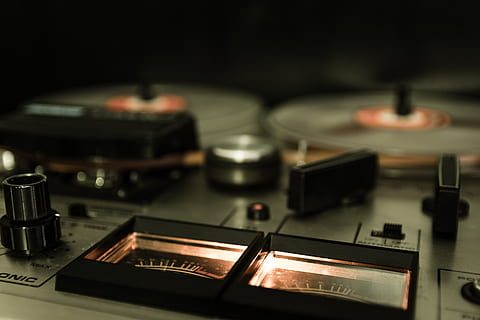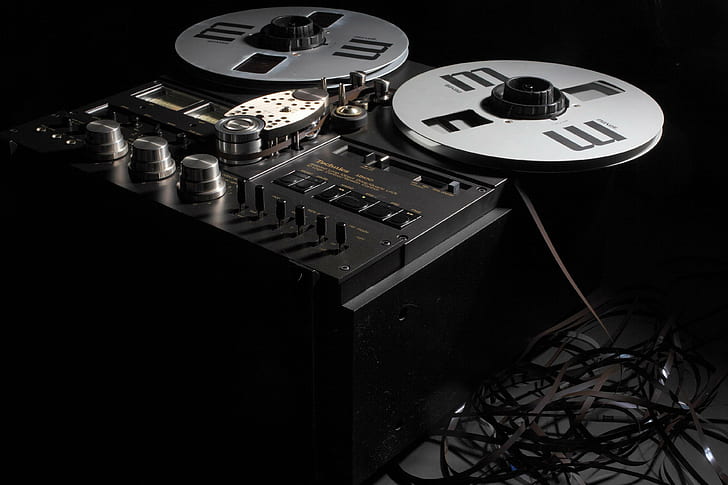When you add a new track to your DAW session, you’ll need to determine between mono vs. stereo.
However, what does each term mean? And what are the main differences? When do you have to use a mono track and when is stereo the better choice?
In this article, we’ll explain all the things you should know about mono vs. stereo—from tracking to the final master.
What is mono?
Mono is single channel audio that gives no information about where a sound is situated related to the listener.
A mono track reaches all your left and right ears without any difference in what you hear on two sides.
That means that mono has a flat, direct sound with no sense of direction.
Mono was the original format for recorded track because many early playback systems had just a single speaker. That’s why so many classic songs from the early pop period were first mixed in mono.
Mono recordings are uncommon right now, however mono tracks still have an essential place in music production.
What is stereo?
Stereo is a two-channel audio format that delivers different audio info on both the left and right sides of your eyes.
Stereo audio mimics the way you hear sound in the actual world with your two ears.
Differences in timing, level, and timbre give your mind subconscious clues about where a sound is located around you.
This phenomenon is known as spatialization and it’s an essential part of psychoacoustics.
In music production, your final master will almost always be a stereo file. Choosing the positioning of your sounds with panning is one of the most essential jobs in mixing.
When should you use mono tracks?
Mono tracks should make up the bulk of the channels in your mix.
Unless your source has a natural spread of stereo information, recording in mono is your greatest bet.
You might think that too many mono channels would make your mix sound complicated.
However, keep in mind that mono tracks can be panned to any location in the stereo field using your DAW’s mixer.
The easiest strategy to get a wide mix is to spread your mono tracks out in the texture.
That means placing some parts far out on the extreme left and right sides of the stereo field while keeping other elements close to the center.
When should you use stereo tracks?
You need to use stereo tracks whenever you record something with natural spatial qualities that you want to reproduce in your mix.
We’re talking about the natural stereo images from drum overheads, room microphones, piano, or stereo synth patches.
These stereo sources help establish a sense of realism and dimension in your mix.
The same can be said for aux return channels from your ambiance effects like delay and reverb.
All these stereo source types include some information that’s the same between channels and some that are different.
If a sound has the same intensity in all the left and right channels, you’ll hear it panned dead center in the stereo field.
If the sounds are different in level, timbre, or timing between the left and right channels, you’ll hear them in position in the stereo track.
Most stereo tracks include a combination of mono and stereo information. Actually, it’s unlikely that any stereo tracks will be completely different between the left and right channels.
That’s the reason why too many stereo tracks can cause a mix to collapse. The sum of all these channels with lingering mono info converges on the center and makes your mix sound narrow.
Luckily, it’s easy to fix it. Two mono tracks with no common information will never overlap when panned separately—that’s the great thing about recording in mono vs. stereo.
Mixing in mono
Even if huge width is your purpose, mono still has a place in your mixing workflow.
With so many different elements in a dense mix, it may be difficult to determine the most serious conflicts.
Adding pan position to the list of variables only makes your job more difficult.
That’s the reason why many engineers use mixing in mono as part of their process.
By temporarily flattening all the stereo information, you’ll get a clearer picture of how each sound in your mix interacts with the others.
To get more information about how mixing in mono can benefit you, head over to this in-depth guide.
To check your mix in mono, all you need to do is use the mono sum option on your master fader to listen to how it sounds.
Mono compatibility
Listening to your mix this way is essential for more than just the mono mixing technique.
Actually, you need to check your mix in mono even if you only ever mix with both channels active.
The reason? Compatibility.
Mono compatibility means how well your mix performs when it will get summed to mono.
Summing to mono is when the left and right channels add together to create a mono signal. If there is conflicting information between the two channels, some sounds may cancel each other out.
You may wonder when this problem would ever happen since most playback systems have two stereo speakers.
However, the fact is that plenty of stereo listening systems are more mono than they seem.
Any set of speakers where the left and right channels are positioned too close to each other reduces the stereo separation of your mix.
We’re talking about devices like phones, Bluetooth speakers, laptops, and most other small speaker systems.
These listening systems have a naturally narrower stereo field with more of the mix prone to overlap.
Ensure that test your mix at least once for mono compatibility before sending it off for mastering.
- The main root causes of poor mono compatibility are:
- Too many stereo tracks
- Artificial stereo widening plugins
- Too much reverb or delay
- Phase issues between microphones
Moving in stereo
Mono and stereo tracks are fundamental building blocks in your DAW session.
Understanding which to make use of is essential for the most effective results.
If you’ve made it through this article you’ll have a solid foundation in the basics of mono vs. stereo.


